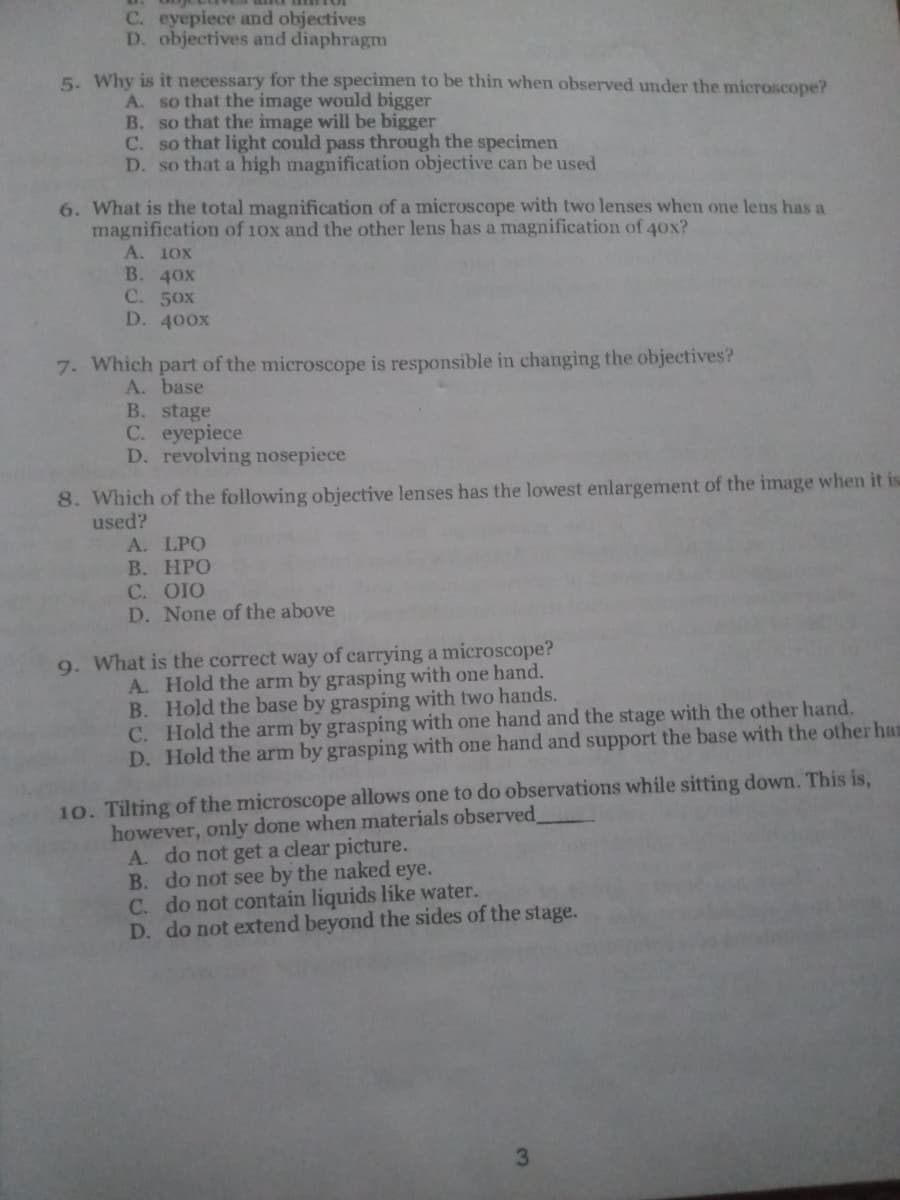5. Why is it necessary for the specimen to be thin when observed under the microscope? A. so that the image would bigger B. so that the image will be bigger C. so that light could pass through the specimen D. so that a high magnification objective can be used
5. Why is it necessary for the specimen to be thin when observed under the microscope? A. so that the image would bigger B. so that the image will be bigger C. so that light could pass through the specimen D. so that a high magnification objective can be used
Biomedical Instrumentation Systems
1st Edition
ISBN:9781133478294
Author:Chatterjee
Publisher:Chatterjee
Chapter15: Instrumentation In Medical Imaging
Section: Chapter Questions
Problem 9P
Related questions
Question

Transcribed Image Text:C. eyepiece and objectives
D. objectives and diaphragm
5. Why is it necessary for the specimen to be thin when observed under the microscope?
A. so that the image would bigger
B. so that the image will be bigger
C. so that light could pass through the specimen
D. so that a high magnification objective can be used
6. What is the total magnification of a microscope with two lenses when one lens has a
magnification of 10x and the other lens has a magnification of 40x?
A. 10X
B. 40X
C. 50X
D. 400X
7. Which part of the microscope is responsible in changing the objectives?
A. base
B. stage
С. eyepiece
D. revolving nosepiece
8. Which of the following objective lenses has the lowest enlargement of the image when it is
used?
A. LPO
В. НРО
C. OIO
D. None of the above
9. What is the correct way of carrying a microscope?
A. Hold the arm by grasping with one hand.
B. Hold the base by grasping with two hands.
C. Hold the arm by grasping with one hand and the stage with the other hand.
D. Hold the arm by grasping with one hand and support the base with the other har
10. Tilting of the microscope allows one to do observations while sitting down. This is,
however, only done when materials observed
A. do not get a clear picture.
B. do not see by the naked eye.
C. do not contain liquids like water.
D. do not extend beyond the sides of the stage.
3.
Expert Solution
This question has been solved!
Explore an expertly crafted, step-by-step solution for a thorough understanding of key concepts.
This is a popular solution!
Trending now
This is a popular solution!
Step by step
Solved in 2 steps

Knowledge Booster
Learn more about
Need a deep-dive on the concept behind this application? Look no further. Learn more about this topic, biology and related others by exploring similar questions and additional content below.Recommended textbooks for you

